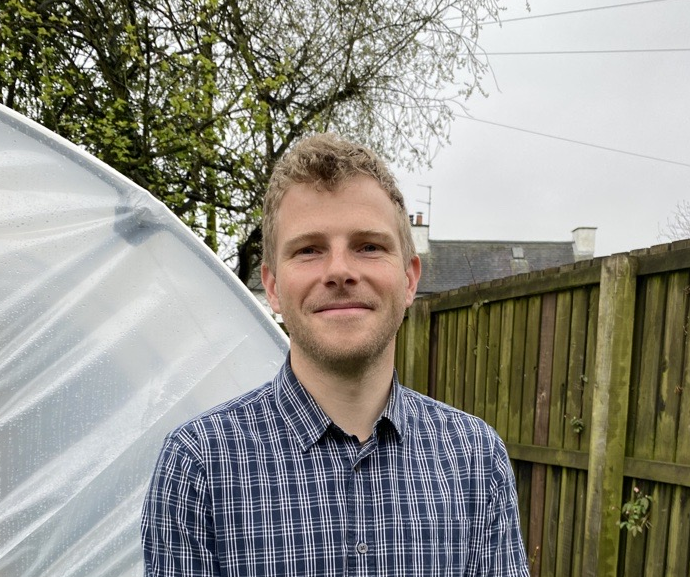Dr Josh Doble: Post-monopoly rural land ownership

Dr Josh Doble
Community Land Scotland’s policy manager, Dr Josh Doble, reflects on the main findings of research on the impact of community land ownership in locations which were previously under monopoly ownership.
Scotland has an exciting opportunity in the next six months as we await the Land Reform Bill and the chance to secure legislation which can help deliver the transformational change in land ownership Scotland desperately needs. In this context, Professor Mike Danson’s report on ‘Post-Monopoly Rural Land Ownership’ provides some much-needed evidence and analysis on the benefits of community land ownership.
In the paper, four communities were studied in detail: Abriachan Forest Trust, Galson Estate Trust/Urras Oighreachd Ghabhsainn, Knoydart Foundation and West Harris Trust/An Urras Taobh Siar na Hearadh. These were chosen for their scale, to offer diversity of opportunity in their development; length of ownership to enable strong before and after comparisons of the different, ownership models and a variety of geographic locations.
Using these case studies Danson details the story of a transition from monopoly to community ownership, and in doing so, clearly articulates the different cultural, economic and social underpinnings of community landownership compared to monopoly landlordism.
As part of his analysis, Danson specifically focuses on whether these four community landowners deliver on the following criteria:
- Sustainable land management necessary to reduce climate impacts, particularly focussing on traditional land management and monoculture approaches
- Empower and strengthen local community resilience, to address short term and long-term shocks
- Help build local economies, support business growth and improve local incomes
- Help address depopulation and negative demographic change
- Embed local community wealth building into the local economy
The criteria Danson selected are an important means of understanding the holistic impact of landownership. They demonstrate that who owns the land is central not just to understanding landed power but how it impacts upon our national response to the climate and biodiversity crises, our attempts to build resilient, circular, wellbeing economies, our drive to support community wealth building and to secure Scotland’s rural population, so that people can live in sustainable and enduring rural communities.
Community Land Scotland are calling for recognition that community ownership of the land and assets around them is the fundamental bedrock upon which resilient communities are based and from which just, long-term responses to the climate and biodiversity crisis, economic and social challenges and rural depopulation can be secured. Danson himself argues that “if there is evidence to answer these criteria in the affirmative then the arguments for community ownership being promoted and extended in the interest of the public and the planet become conclusive”.
Politicians also recognise the importance of this, as we see in the introduction of Community Wealth Building legislation, the government commitment to land reform and the circular, wellbeing economy. However, it is time for the warm words of encouragement from government to result in robust and concrete legislation which allows these vital changes to take place.
Danson’s report provides clear evidence to policy makers that community ownership – as exemplified by these four case studies– has led to further sustainable development, community resilience and local social and economic progress. In the table below, Danson’s findings set out how, in terms of jobs, enterprise, income and other economic performance indicators, all four case studies recorded positive and sustained progress. Progress which would not have happened, or would have been severely delayed, under previous monopoly ownership.
After reading through Danson’s research, I was left with the overarching conclusion that while monopoly landowners are focused on profit and the monetary value of land, community landowners value, and contribute to, a far wider range of issues central to not only economic life but social and cultural life. In Danson’s examples, and across the rest of our membership, community ownership means valuing the totality of what constitutes a healthy community and environment, alongside economic viability: Culture and language; repopulation and housing; employment and local wealth and environmental protection and green space expansion.
Most crucially community landowners do all of this with the input and consent of the local population – it is fundamentally a democratic and pluralistic model.
Danson finishes with a call to action which we all need to heed as we look forward to ensuring that the Land Reform Bill is as robust and transformational as it needs to be: “Communities, the economy and the environment cannot afford to wait for market failures to be addressed by the owners of large estates, whether private, state or NGOs.”
We agree wholeheartedly with Danson’s call here – it is time for the extension of community ownership across Scotland as broadly and quickly as possible. If we are going to face the environmental, economic, and social challenges facing Scotland in the 21st century, we need local communities to be empowered and to have opportunities to own the land and assets around them, so they can be the drivers of change.
Professor Danson is an economist and Professor Emeritus of Enterprise Policy, Heriot-Watt University and Fellow of the Academy of Social Sciences. He has published widely on rural, regional and island economies, microbreweries, minority languages, and many other areas with 18 books, 100 book chapters and over 500 papers.









